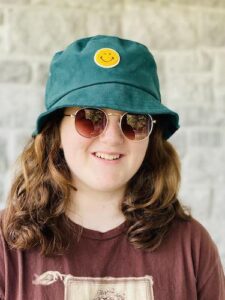Jenny Bloom-Barkley
Junior Astronomer
Grade 8 student at NDDHS

Anyone interested in astronomy will be excited to hear that a total solar eclipse is coming to the area on April 8th. In ancient times, people believed that a solar eclipse was caused by a dragon swallowing the sun. In the modern era, we now know it’s caused by the moon passing between the sun and the earth casting the moon’s shadow along a path on the earth.
The path of totality of April’s eclipse will follow along the St Lawrence River. It’s important to know that people inside the path of totality (Kingston to Cornwall) will see both a partial solar eclipse and a total solar eclipse, but the people outside of the path (Winchester and Chesterville) will only experience the partial eclipse. The difference between a partial and a total eclipse is bigger than the difference between night and day. Many people consider a total solar eclipse to be a life changing experience. I strongly encourage you to take the time to go to the St Lawrence River to experience the total solar eclipse.
What can you expect during a total solar eclipse? A total solar eclipse is a significant event. The sky will go dark and the temperature will drop. The stars and planets and the sun’s corona will be visible around the moon. Animals may act strange. Sometimes nocturnal animals like owls and foxes will come out in the confusion. Birds will go silent and roost in trees. Strange shadow bands may dance around on the ground. The shadow of the moon will be 177 kms wide and will approach you at 3,911 km/h. You don’t want to miss it!
The partial eclipse will begin at 2:11 pm and will end at 4:35 pm. The total eclipse will begin at 3:24 pm and end at 3:26 pm.
To safely view the partial eclipse, you will need eclipse glasses that are ISO certified, or shade 14 welder’s goggles. Once the total eclipse begins, you may safely take off your eclipse glasses and view with the naked eye or binoculars. The corona of the sun will be very majestic when viewed through binoculars. The total eclipse will last for 2 minutes and 11 seconds (based on the Morrisburg area – the time varies by location) and then you can put your eclipse glasses back on to view the partial eclipse again as the moon moves away from the sun. It’s very important that you don’t observe the partial eclipse with the naked eye or binoculars or use your binoculars with eclipse glasses. This may result in severe eye damage.
Expect there to be many people attending and for traffic to be heavy. I hope you all safely enjoy the nearly once in a lifetime phenomenon, and I wish you clear skies!



